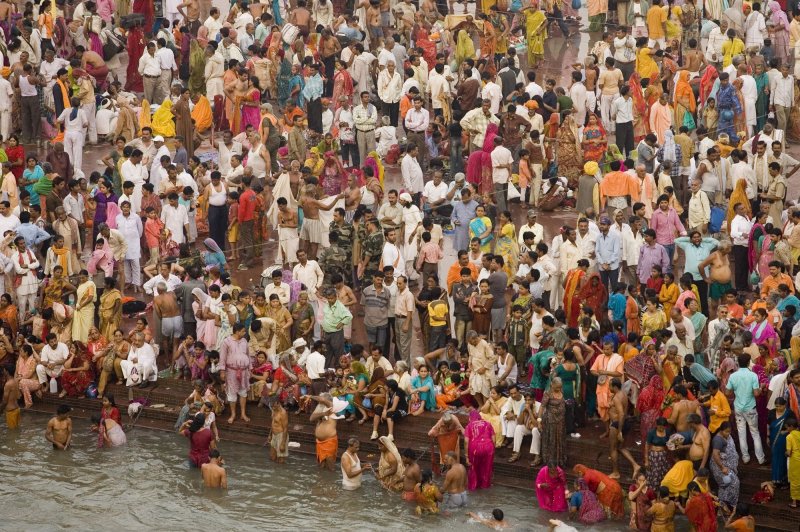1 of 4 | Hindu devotees line up to take a "Shahi Snan," or "holy dip," in the Ganges River during the Kumbh Mela festival in Haridwar, India on April 15, 2010. The pilgrimage takes place every three years, rotating among four different locations in India, thus, once every 12 years in each location. It lasts for 42 days, attracting millions of people, and devotees believe that taking a bath in the river will wash their sins away so they begin life anew. Organizers for the 2015 festival, which takes place in Nashik and Trimbakeshwar, in Maharashtra state, have banned attendees from taking selfies during "Shahi Snan" due to fear of potential stampedes. File photo by Maryam Rahmanian |
License PhotoAs part of a study conducted with 100 volunteers, local administrators found people who took selfies ended up slowing the flow of people through the river, leading to pushing and panicking. The study also found people climbed to dangerous locations to take such pictures.
Deadly stampedes are not uncommon at religious festivals in India. On Aug. 10, at least 10 people died as thousands of attendees of a religious festival in Deoghar, India, rushed toward a temple as its doors opened, and on July 14, at least 27 Hindu pilgrims died in a stampede while on the banks of the Godavari river at the start of the Maha Pushkaralu religious festival.















